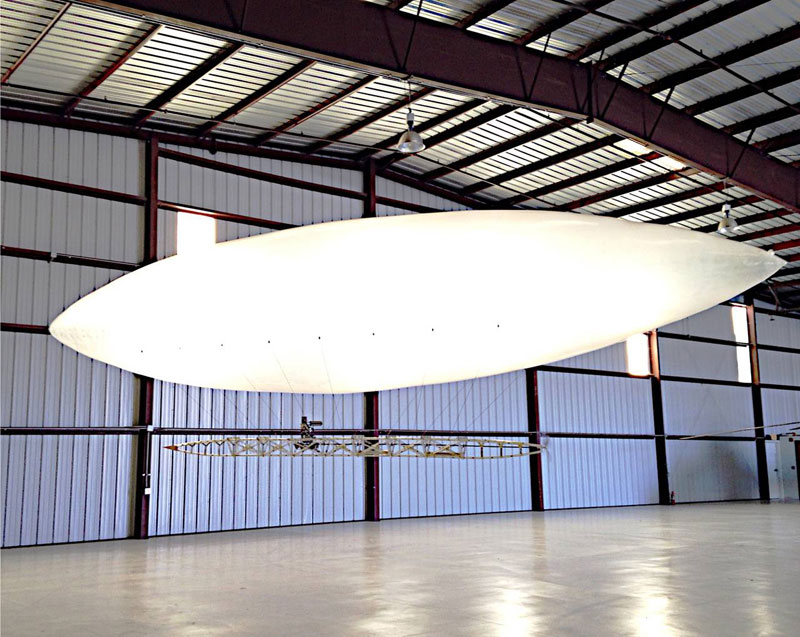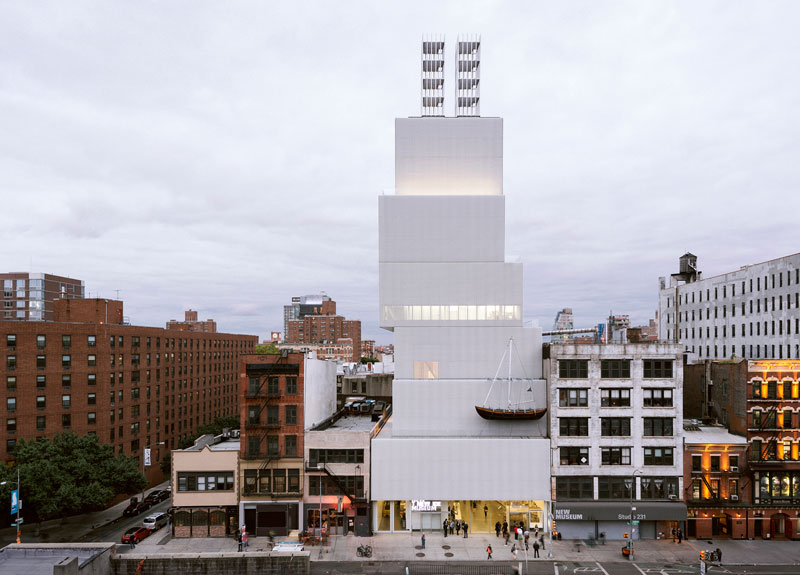At the Los Angeles County Museum of Art, a giant zeppelin of translucent vinyl whirs in wide circles in a vast empty chamber. As the craft curves along its regular trajectory, guided only by a thin wire tether, its pale ghostly hull catches diffuse flashes of California light from the windows, filling with golden warmth. This is not the Hindenburg; it is Ode to Santos Dumont, the last completed work by artist Chris Burden, and a testament to the enduring power of the human spirit.
When news broke on 10 May that Chris Burden had died from acute melanoma at the age of 69, it came to the art world as a tragic shock. Ever since the earliest days of his practice, Burden seemed indestructible; he famously had himself shot during an early performance, and later built dozens of gravity-defying Erector-set skyscrapers and aircraft with machinic precision. He was notoriously confidential about his private life, and only a few close friends and family knew he was ill as he laboured on Ode to Santos Dumont, which took its elegant form over 10 years of research and construction in a Camarillo hangar.
Burden’s ability to inspire wonder was – and remains – unmatched. His installation Urban Light, a collection of over 200 streetlamps collected from around Los Angeles, became an instant local landmark upon its completion in 2008. Every evening, as the bulbs begin to glow against the purple dusk and the fringe of palm trees along Wilshire Boulevard, audible gasps can be heard from the crowds navigating the sculpture’s cast-iron thicket. In New York, the news of Burden’s passing has prompted pilgrimages to the New Museum, where the artist’s 2005 work Ghost Ship is suspended at a height of several storeys from the façade. In the year of its christening, Ghost Ship travelled 530 kilometres unmanned, from Fair Isle to Newcastle-upon-Tyne, guided solely by onboard computers. Like many of Burden’s works, the ship is an impressive scientific feat rife with poetic meaning. At a glance the self-steering craft heralds the seaman’s obsolescence, but on a deeper level suggests benign guidance from above, as if steered by unseen hands to safer harbours.
Burden established himself as a pioneer of body art and performance in 1971 with Five Day Locker Piece, his MFA thesis at the University of California, Irvine, for which he stuffed himself in a school locker for five days with a five-gallon jug of water and a five-gallon empty bottle for urine. He continued to test bodily limits in pieces like Through the Night Softly (1973), in which he crawled nearly naked down a downtown Los Angeles street covered in broken glass, or the cheekily named Kunst Kick (1974), in which he was kicked down a flight of stairs at Art Basel. In his legendary 1974 performance Trans-fixed, Burden was crucified to the back of a Volkswagen Beetle. The extreme, self-inflicted violence of these early works seems wholly at odds with the later Burden, who constructed massive Erector set towers, toy car tracks and aeroplanes, leading many to ask: how did masochistic grit become childlike whimsy?
There could scarcely be a better lynchpin in a discussion of Burden’s work than Ode to Santos Dumont, his ultimate celebration of human ingenuity and perseverance. The piece memorialises Alberto Santos-Dumont, a Brazilian aeronaut who, against all odds, made the first dirigible flight around the Eiffel Tower in 1901. (Burden’s original plan for the sculpture included an Eiffel Tower made of Erector set pieces, but no exhibition space could accommodate it.) Just as Santos-Dumont took a death-defying leap of faith, so too did Burden assume great personal risk in his projects. Both men devoted assiduous care and attention to their endeavours, in which minor details could mean life or death. And the results were awe-inspiring, forever a testament to patient persistence in the face of great challenges and a steadfast faith in the power of human creativity.
As LACMA visitors continue to pay their respects to Burden, Ode to Santos Dumont becomes not just a paean to the Brazilian engineer but the artist himself, an ode to his ability to make the impossible seem possible. Towards the end of each 15-minute flight, the zeppelin’s propeller shuts off, but the craft continues to glide silently in graceful circles, as if nothing could ever bring it down.
Chris Burden’s ‘Ode to Santos Dumont’ is on show at the Los Angeles County Museum of Art (LACMA) until 21 June.






